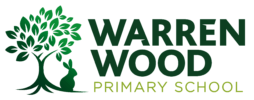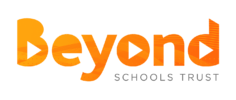English has a pre-eminent place in education and in society and it is for this reason, we place the teaching of English at the centre of everything we do. Our overarching aim for English in the Primary National Curriculum and at Warren Wood Primary Academy is to promote high standards of language and literacy by equipping pupils with a strong command of the spoken and written word, and to develop their love of literature through widespread reading for enjoyment.
Writing – Click to expand
At Warren Wood Primary Academy, we aim to develop confident and able writers who are able to produce well structured, detailed writing in which the meaning is made clear and engages the interest of the reader.
Across the school, each year group focuses their literacy lessons around a text linked to their topic. By studying and exploring the text in a variety of exciting and creative ways, the children learn the how different genres are created and use these skills to develop extended pieces of independent work; often across a range of curriculum subjects. The children are then taught (from year 1) to read, edit and improve their writing, learning to identify errors and areas where their sentences could be improved.
Whilst exploring texts in detail and learning about different genres, the children are taught the grammar, punctuation and spelling expectations that are required for their year group. Our children are taught these skills in a variety of ways that allow the children to explore and apply grammar rule in their writing. For every piece of extended writing the children complete, they are taught the specific punctuation and grammar skills that are then applied to work they are completing.
As well as learning to develop the skills needed for writing extended pieces, our strive for excellence drives our high expectations of presentation, with children taught to write cursively aiming to earn a pen license. At Warren Wood, we follow the Twinkl scheme of work for handwriting and use the continuous cursive font.
Phonics – Click to expand
At Warren Wood Primary Academy we follow the Twinkl Phonics programme. This is a phonics resource recognised by the Department for Education. Twinkl Phonics is a fully comprehensive, synthetic phonics teaching programme designed to be used with children from Nursery to Year 2. Delivered through stories and adventures of Kit, Sam and the Twinkl Phonics family, the scheme builds and develops the skills and understanding children need to become effective, independent readers and writers.
Level 1
Level 1 of Twinkl Phonics concentrates on developing children’s speaking and listening skills and lays the foundations for all future phonic work.
Level 1 is divided into seven aspects:
A1 – Environmental
A2 – Instrumental sounds
A3 – Body Percussion
A4 – Rhythm and rhyme
A5 – Alliteration
A6 – Voice sounds
A7 – Oral blending and segmenting.
Each aspect contains three strands:
- Tuning in to sounds (auditory discrimination)
- Listening and remembering sounds (auditory memory and sequencing)
- Talking about sounds (developing vocabulary and language comprehension)
Level 2
In Level 2, letters and their sounds (phonemes) are introduced one at a time.
A set of letters is taught each week, in the following sequence:
Set 1: s, a, t, p
Set 2: i, n, m, d
Set 3: g, o, c, k
Set 4: ck, e, u, r
Set 5: h, b, f, ff, l, ll, ss
Children are taught that words are constructed from phonemes and that the sound they make are represented by graphemes. Children learn to blend them together to read simple words and segment them to support spelling simple words such as ‘sad’, ‘hot’, ‘mess’.
Level 3
New graphemes are introduced one at a time in the following sequence:
Set 6: j, v, w, x
Set 7: y, z, zz, qu
Consonant digraphs: ch, sh, th, ng
Vowel digraphs: ai, ee, igh, oa, oo, ar, or, ur, ow, oi, ear, air, ure, er
Level 4
In Level 4, no new graphemes are introduced. The main aim of this level is to consolidate the children’s knowledge learnt previously and apply this into two syllable and polysyllable words such as ‘sandpit’, ‘windmill’ and ‘lunchbox’. There is also an emphasis on teaching words which have adjacent consonants, such as ‘strap’, ‘start’, ‘pumpkin’ and ‘monster’.
Level 5
In Level 5 children will be taught some new graphemes and alternative pronunciations for these graphemes and graphemes they already know. They will begin to learn to choose the appropriate grapheme when spelling. For example, children will already know /ai/ as in ‘rain’, but now they will be introduced to /ay/ as in ‘day’ and /a-e/ as in ‘make’. Alternative pronunciations for graphemes will also be introduced, e.g. /ea / in ‘tea’, ‘head’ and ‘break’.
Digraphs: wh, ph, ay, ou, ie, ea, oy, ir, ue, aw, ew, oe, au
Split digraphs: a_e, e_e, i_e, o_e, u_e
Terminology
Phonics – Phonics teaches children to listen to and identify the sounds that make up words. This helps them to read and write words.
Blend – Saying the individual sounds that make up a word and then merging or blending the sounds together to say the word – used when reading.
Segment – This is the opposite of blending. Splitting a word up into individual sounds – used when spelling and writing.
Vowel – The letters a, e, i, o, u.
Consonant – Most letters of the alphabet (excluding the vowels: a,e,i,o,u).
CVC words: Abbreviation used for consonant-vowel-consonant words, used to describe the order of sounds. Some examples of CVC words are: cat, pen, top, chat (because ch makes one sound).
Other similar abbreviations include:
VC words e.g. on, is, it
CCVC words e.g. trap and black
CVCC words e.g. milk and fast
Phoneme – A single sound that can be made by one or more letters – e.g. s, k, z, oo, ph, igh.
Grapheme – Written letters or a group of letters which represent one single sound (phoneme) e.g. a, l, sh, air, ck.
Digraph – Two letters which together make one sound e.g. ee, oa, ea, ch, ay. There are different types of digraph:
• Vowel digraph: a digraph in which at least one of the letters is a vowel, for example; boat or day.
• Consonant digraph: two consonants which can go together, for example shop or thin.
• Split digraph (previously called magic e): two letters, which work as a pair to make one sound, but are separated within the word e.g. a-e, e-e, i-e, o-e, u-e. For example cake or pine.
Trigraph – Three letters which go together make one sound e.g. ear, air, igh, dge, tch.
Pure sound – Pronouncing each letter sound clearly and distinctly without adding additional sounds to the end e.g. ‘f’ not ‘fuh.’ Top Tip – It is tricky to say some sounds without the ‘uh’ sound at the end – like b, d, v and g! Try to emphasise the main letter sound when talking about these letter sounds. Some are easier to say by dragging the sound out e.g. ffffff rather than ‘fuh’ or mmmmmm rather than ‘muh.’
Tricky words – Words that are difficult to sound out e.g. said, the, because.
Year 1 Phonics Screening Check
What is the phonics screening check?
The phonics screening check was introduced in 2012 to all Year 1 pupils in England. It is a short, statutory assessment and is designed to give and parents/carers information about children’s progress in phonics. It helps to identify whether they need additional support to ensure they are on track to become a fluent reader who can enjoy reading for pleasure and for learning.
When will the phonics screening take place?
The check will take place June 12th 2023.
How does the check work?
The check normally takes 5-10 minutes and is designed not to be stressful for your child. The phonics screening check contains 40 words divided into two sections of 20 words. Both sections contain a mixture of real words and pseudo-(nonsense/ alien) words. The nonsense words will be shown with a picture of an alien.
Why are there Pseudo Words/ nonsense words / alien words?
The nonsense words are important as they cannot be read using the children’s vocabulary or from memory. The children have to use their phonic knowledge and decoding skills to read the words and this is a fair way to assess all children’s ability to decode and read words.
Phonics at Home
Tips for teaching your child the sounds
It is important for a child to learn lower case or small letters rather than capital letters at first. Most early books and games use lower case letters and your child will learn these first at school. Obviously, you should use a capital letter when required, such as at the beginning of the child’s name, e.g. Paul. Or for a place, e.g. Gravesend.
When you talk about letters to your child, remember to use the letter sounds: a buh cuh duh e … rather than the alphabet names of the letters: ay bee see dee ee. The reason for this is that sounding out words is practically impossible if you use the alphabet names. E.g. cat, would sound like: see ay tee.
Useful Websites
Phonics Play
This is a very popular website we use regularly in our phonics lessons. The children will be familiar with the website and its games. Some of our favourite games are:
- Flashcards
- Buried Treasure
- Dragons Den
- Picnic on Pluto
- Reading Robot
Mr. Thorne Does Phonics
If you are unsure how to correctly pronounce any of the sounds go to Mr. Thorne Does Phonics on YouTube where you can watch videos of Mr. Thorne or his friend Geraldine the Giraffe teach the sound and discuss words including it.
https://www.youtube.com/user/breakthruchris
Alphablocks
Can be watched on the Cbeebies channel or accessed via youtube.com. It involves interactive videos that children can watch and it allows them to practise sound recognition and blending.
https://www.bbc.co.uk/cbeebies/shows/alphablocks
https://www.youtube.com/channel/UC_qs3c0ehDvZkbiEbOj6Drg
ICT Games
http://www.ictgames.com/literacy.html
BBC Bitesize
https://www.bbc.co.uk/bitesize/subjects/zgkw2hv
Both websites offer a great range of activities and games to support grapheme, phoneme recognition, blending and segmenting.
Reading – Click to expand
We believe the ability to read is the key to success and the importance of reading be underestimated. Reading for pleasure can benefit a child’s education, social and cognitive development, their wellbeing, and their mental health. Through reading in particular, pupils have a chance to develop culturally, emotionally, intellectually, socially and spiritually. Literature, especially, plays a key role in such development. Reading also enables pupils both to acquire knowledge and to build on what they already know.
At Warren Wood, we use reading VIPERS to teach reading comprehension. VIPERS is an anagram to aid the recall of the 6 reading domains as part of the UK’s reading curriculum. They are the key areas which children need to know and understand in order to improve their comprehension of texts.
Key Stage 1
In Key Stage One children reading skills are taught and practised using the VIPERS during whole class reading sessions.
KS1 Content Domain Reference [VIPER]
1a draw on knowledge of vocabulary to understand texts [Vocabulary]
1b identify/explain key aspects of fiction and non-fiction, such as characters, events, titles and information [Retrieve]
1c identify and explain the sequences of events in texts [Sequence]
1d make inferences from the text [Infer]
1e predict what might happen on the basis of what has been read so far [Predict]
Key Stage 2
In Key Stage Two children reading skills are taught and practised using VIPERS during whole class reading sessions.
KS2 Content Domain Reference [VIPER]
2a Give/explain the meaning of words in context [Vocabulary]
2b retrieve and record information/ identify key details from fiction and non/fiction [Retrieve]
2c summarise main ideas from more than one paragraph [Summarise]
2d make inferences from the text/ explain and justify inferences with evidence from the text [Infer]
2e predict what might happen from details stated or implied [Predict]
2f identify/explain how information/ narrative content is related and contributes to meaning as a whole [Explain]
2g identify/explain how meaning is enhanced through choice of words and phrases [Explain]
2h make comparisons within a text [Explain]
To help develop our children as readers and to ensure that they are reading and choosing books at an appropriate level, we use a programme called Accelerated Reader (AR). This is where the children an online Star Test, to work out accurately where their reading level is and the books they can choose. Once they have completed the test, they are provided with a ZPD range which gives them a range of numbers in which they can select books. This allows them to read at the right level but still be able to select their books. Once they have completed the book they are reading, they complete a quick quiz on a computer which assesses how well they have read and understood the book. This also provides the children with a word count so they can see how many words they have read.
To complement Accelerated reader, each child also has access to MYON. This is a programme that has a selection of thousands of online books that are linked directly to Accelerated Reader.
Although the children are provided with an opportunity to read at school, it is vital that they read at home. The expectation is that all children read for a minimum of 10 minutes 5 times per week. The more often children read at home, the better it is for their development. Every time a child reads at home, the expectation is that their reading record book is signed. In years 1-4 this should be by a parent/carer and in 5 and 6, the children are expected to record their own reading.


